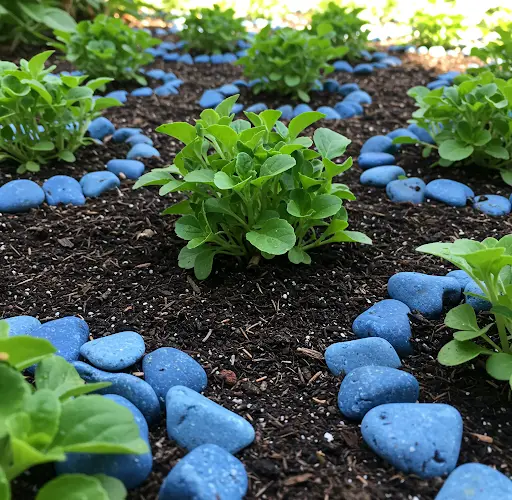Variable weather conditions, combined with high humidity and elevated temperatures, create the perfect environment for the development of plant diseases. Among the most common are fungal infections that attack the leaves, stems, and roots of fruits and vegetables. If you notice that a plant’s leaves are suddenly wilting, losing their firmness, or changing color from green to shades of yellow or gray, you should immediately investigate the cause. Early intervention can prevent significant damage and ensure a healthy harvest.
Fungal diseases are often difficult to detect in their early stages. By the time visible symptoms appear, the plant is already under considerable stress and in danger. Some of the most affected crops include tomatoes, cucumbers, and watermelons, while potatoes, though relatively resilient, can also succumb later in the season. Watermelon and cucumber plants are usually the first to show symptoms, often exhibiting darkened and shriveled leaves in just a few hours. Without quick action, the affected plant can dry out completely, leading to loss of yield.
One of the most aggressive fungal diseases is downy mildew, which thrives in humid conditions and spreads rapidly when temperatures rise. For hobby gardeners, losing a few plants may not be a significant issue, but for commercial growers, such losses can have serious financial consequences. As a result, preventive measures and timely treatments are crucial for protecting crops from fungal infestations.
In recent years, fungal diseases have become increasingly prevalent and severe, making it nearly impossible to cultivate certain plants without protective measures. Fungicides are the most common method of protection, and they fall into three main categories: natural, organic, and chemical.
Natural and Organic Fungicides
Natural and organic fungicides, such as baking soda and milk solutions, have gained popularity among eco-conscious gardeners. These preparations are safe for human health and the environment. However, their primary limitation is that they are effective only as a preventive measure; they cannot cure a plant that is already infected. To maximize their effectiveness, these treatments should be applied before any signs of disease appear, ideally in warm, dry conditions when fungal spores are most active.
Chemical Fungicides
Chemical fungicides are available in varying strengths, ranging from mild to highly potent formulations. When using chemical treatments, it is essential to consider the plant’s growth stage. Plants that are already bearing fruit should not be sprayed with strong chemical fungicides, as residues can accumulate on the produce. Each chemical fungicide has a withdrawal period, which dictates the time required between treatment and fruit consumption to ensure safety.
Some chemical fungicides are specifically formulated for use during certain times of the year. For example, certain treatments are applied in the fall when plants are dormant and do not have leaves. This is particularly common in fruit trees, where post-harvest treatments help prevent infections in the following season. Among the most widely used natural-based chemical treatments are copper-based fungicides.
Copper-Based Fungicides
Copper-based fungicides have been used for centuries to combat plant diseases. One of the most well-known forms is copper sulfate, commonly referred to as blue stone or blue vitriol. It is often found in nature as blue, transparent crystals and is highly soluble in water.
The use of blue stone dates back to ancient civilizations, including the Egyptians and Romans. During the late 19th century, its fungicidal properties were scientifically recognized, leading to widespread use in agriculture. When dissolved in water, copper sulfate forms an acidic solution that is toxic to fungal spores and many small pests. While highly effective, it must be used with caution to prevent copper accumulation in soil and plants, which can be harmful to beneficial organisms.
Application of Copper-Based Fungicides
In viticulture, copper sulfate is frequently combined with slaked lime to create Bordeaux mixture, a well-known fungicide used to protect grapevines from fungal diseases. This preparation is also commonly applied to tomatoes, potatoes, and cucumbers to prevent infections. Copper ions disrupt fungal enzymatic processes, effectively inhibiting spore germination and spread.
The recommended application ratio for blue stone is 100 grams per 10 liters of water. It is best to dissolve the copper sulfate in a small quantity of water first before diluting it further. When treating plants with this solution, care should be taken to apply it before fruit formation. For crops like tomatoes, it is sufficient to spray only the leaves. If fruits are already present, the lower leaves should be targeted while avoiding direct contact with the fruit.
Preventive Measures for Fungal Control
Fungal diseases not only damage crops but also compromise the quality of the fruit. In some cases, even if the plant continues to produce, the fruits may become inedible due to disease progression. Fungicide treatments help mitigate this risk, but the best approach is prevention. One of the most effective strategies is to apply fungicidal treatments in the fall, after the growing season has ended. Removing plant debris, such as dry leaves and old stems, helps prevent fungal spores from overwintering and reemerging in the spring.
Growing fruits and vegetables is becoming increasingly challenging due to the rise in fungal infections and insect infestations. Additionally, many pathogens are developing resistance to commonly used fungicides, making them less effective over time. This has led to the need for constant innovation in pest control products, which is not always an ideal solution.
To reduce reliance on synthetic chemicals, farmers and gardeners can adopt ecological growing methods, such as selecting disease-resistant plant varieties, rotating crops, and using organic fungicides. By taking preventive action and treating plants before symptoms appear, growers can improve plant health and productivity while minimizing environmental impact.
Ultimately, plant disease management requires a balanced approach that combines natural remedies, organic solutions, and, when necessary, chemical treatments. The key to success lies in early detection, timely intervention, and consistent preventive care. By following these guidelines, growers can protect their crops and ensure a bountiful harvest season after season.



